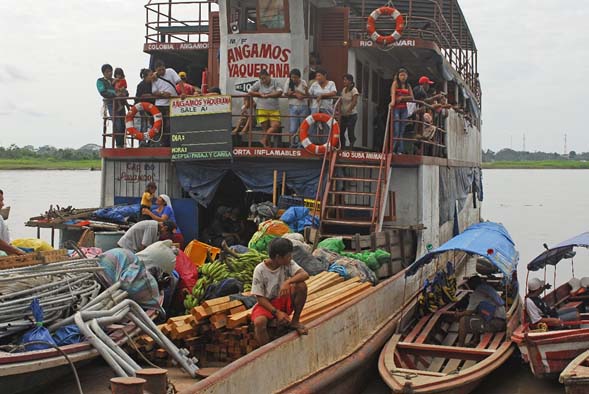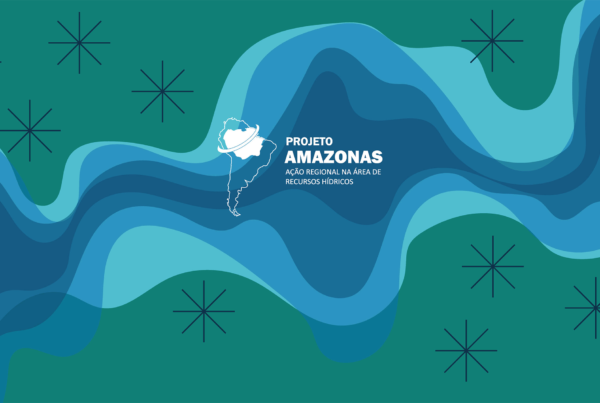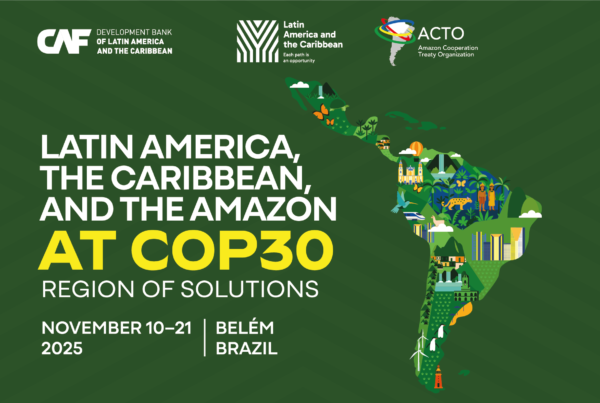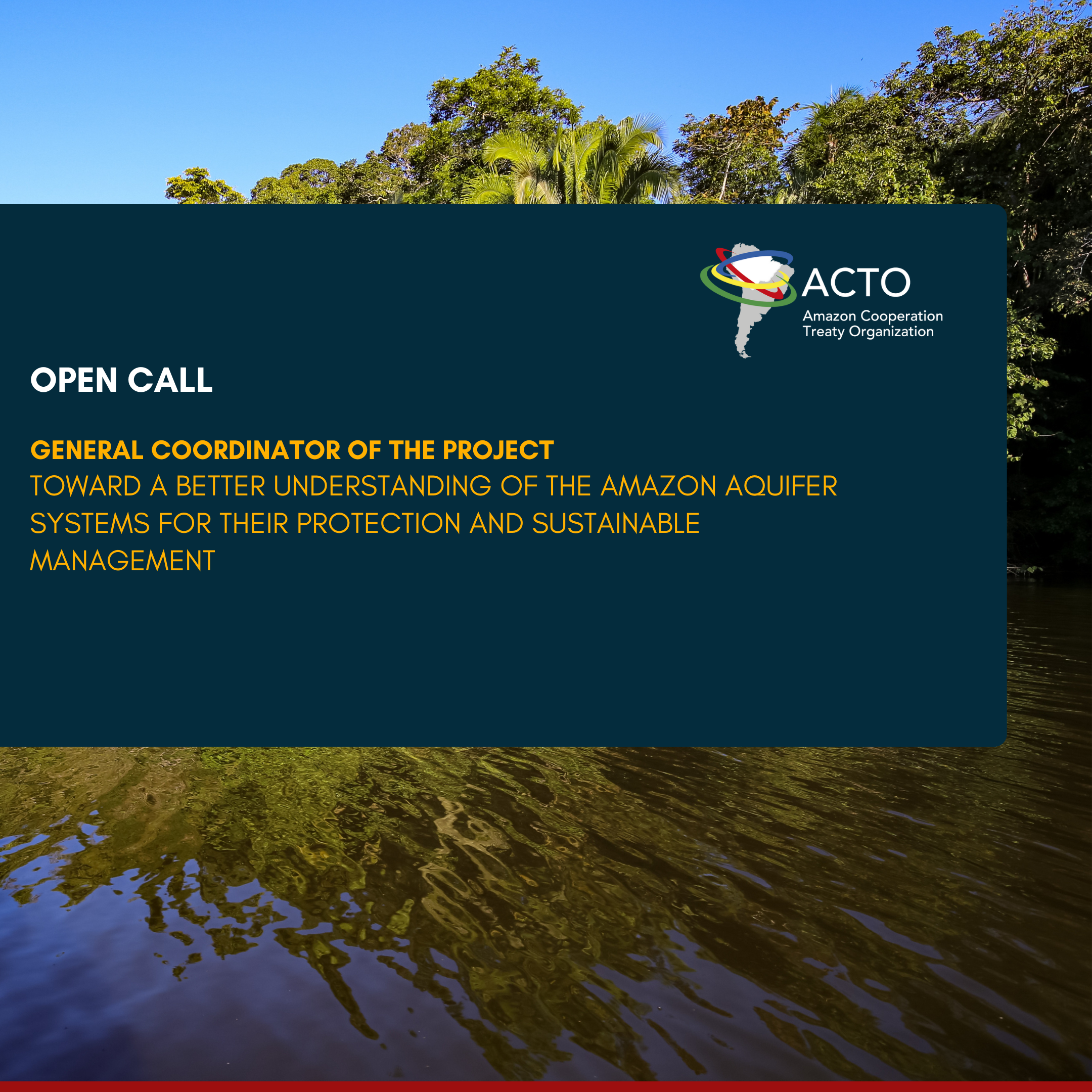Dialogue and action in the Amazon Basin: for the world’s largest river

Water pollution is one of the nine critical problems in the Amazon. To address transboundary issues such as water quality, loss of biodiversity and limited water governance, among others, the eight Amazonian countries Bolivia, Brazil, Colombia, Ecuador, Guyana, Peru, Suriname and Venezuela, which are members of the Amazon Cooperation Treaty Organization, ACTO, designed and agreed the Strategic Action Program (SAP), under three lines of action: first, to strengthen Integrated Water Resources Management (IWRM); second, to address climate variability and change; and finally, to promote knowledge management.
Thus, the Amazon Basin Project-Implementation of the Strategic Action Program in the Amazon River Basin considering Variability and Climate Change was created, providing a space for dialogue, action and social participation, a strategic principle of Water Governance.
Project objective: to support the Basin countries in implementing the Strategic Action Program (SAP), promoting Integrated Water Resources Management (IWRM) in the source-to-sea continuum, which makes all the Earth’s ecosystems interconnected. This new concept complements the approach of coordinating the development and management of water, land and other resources to maximize economic results and social welfare without compromising the environment, making visible the continuous flows of water, flora, fauna, sediments, pollution, biota (living organisms), etc. carried by the Amazon River from its source in Peru, during its journey of more than 6,992 km. through the geography of the eight countries until it reaches the Atlantic Ocean in Brazil.
A look at the Amazon Basin

The Amazon Basin is the most biologically diverse river basin in the world, covering more than 6,118,000 km², or 44% of the land area of South America. It covers more than half of the tropical forest and contains the largest freshwater system on the planet, discharging 15-20% of the world’s liquid freshwater into the Atlantic Ocean. As such, it plays an essential role in global water and carbon cycles, making it an important natural regulator of the world’s climate. Precipitation levels range from 200 mm per year in the Andes to more than 6,000 mm per year in some locations in the Amazon plains. It is characterized by 14 climate types and 21 soil types. Hence its extraordinary richness, more than 30,000 species of plants, about 3,000 species of fish, 60 species of reptiles, 35 families of mammals, and approximately 1,800 species of birds inhabit the region. Its population is approximately 48.5 million people, under an accelerated process of urbanization and territorial occupation, with its main economic activities being: extraction of natural, mineral and forest resources, fishing, agriculture, mining and small-scale tourism, which impact the quantity and quality of the Amazon Basin’s water resources. (ACTO/SAP, 2018).
Join the tasks of the Amazon Basin Project

Building a space for dialogue on Transboundary Water Governance in the Amazon countries is the first task to create an innovative governance model for Integrated Water Resources Management (IWRM) in the Amazon Basin. This involves social participation, including stakeholders from the various sectors (water, energy, education, among others) of the region, the Project partners, concerned with the situation of the Basin. Through interaction, Amazonian stakeholders will have an opportunity to share the diversity of uses, knowledge and management of water governance and jointly create the model, from the local level, to move towards greater participation and sustainability of water management. The Project provides a space to create links for the Basin, and this is also evident in its second task which is: Building community resilience and protection of aquatic ecosystems in the face of climate change.
This perspective includes broad social participation. Planners, scientists and communities will be united. This is an innovative project that will promote the capacity to adapt to droughts and floods in order to face the effects of climate change, aiming to ensure and sustain water security. In addition, the third task of the Project is to monitor water resources and ecosystems through regional monitoring networks. Through monitoring water quality and quantity, erosion and ecosystems, the Project will provide environmental data for coordinated decision making in the Region.
Towards a new Amazon Basin: Inclusive and Sustainable

The strategic principle of the Project is citizen participation under the gender perspective, i.e. the initiative aims to promote gender equality and the empowerment of women in integrated water management, so that they can participate in the training and decision-making processes in all the activities carried out by the Project. The actions of the Amazon Basin Project will allow the institutional strengthening of water governance at the regional (ACTO) and national levels for better management of the basin, and improved state of the ecosystem and livelihoods. Likewise, informed communities will be able to increase their capacity to adapt to droughts and floods, loss of glaciers and sea level rise while protecting ecosystems. Basin-wide compatible information will be available for political decision making in IWRM and for the conservation and protection of aquatic ecosystems.
Learn about the socioeconomic, environmental and institutional benefits expected from the Amazon Basin Project
The countries aim to maintain the long-term sustainability of IWRM, to achieve socioeconomic, environmental and institutional benefits through the effective implementation of the SAP at the national and regional levels.
- A Permanent Regional Coordination Mechanism for Integrated Water Resources Management (IWRM) for the Amazon Basin will be created in ACTO.
- More than 1,400 professionals and at least 10,000 members of local communities will be trained (at least 40% women).
- Nearly 7.8 million people will have increased resilience to climate change impacts.
- An area of 600,000,000 ha will be covered by an integrated environmental monitoring system.
Participating countries and agencies: The 8 ACTO Member Countries, UNEP and the GEF, which contributes USD11,735,780.



